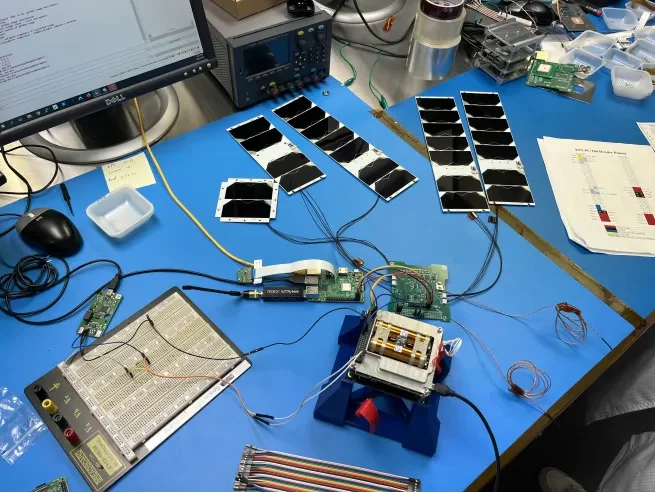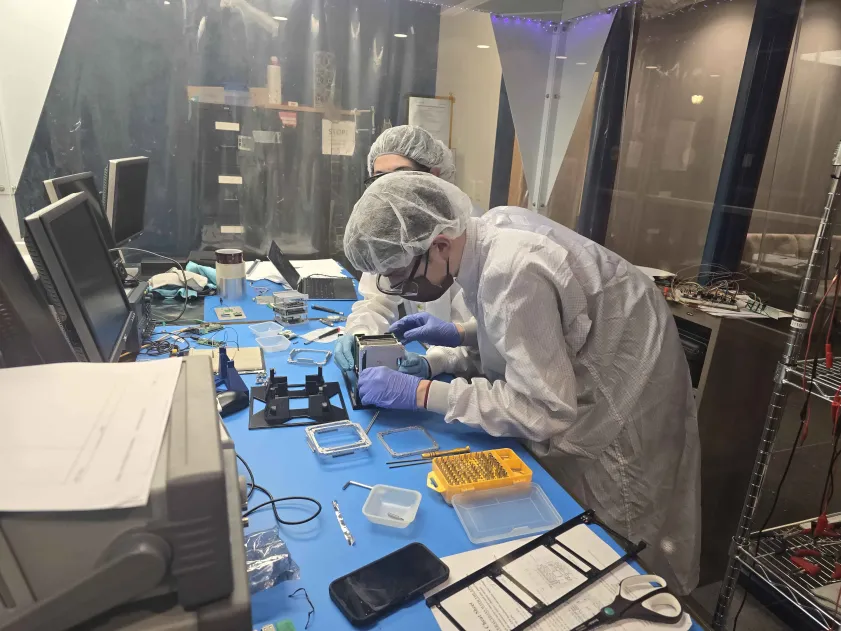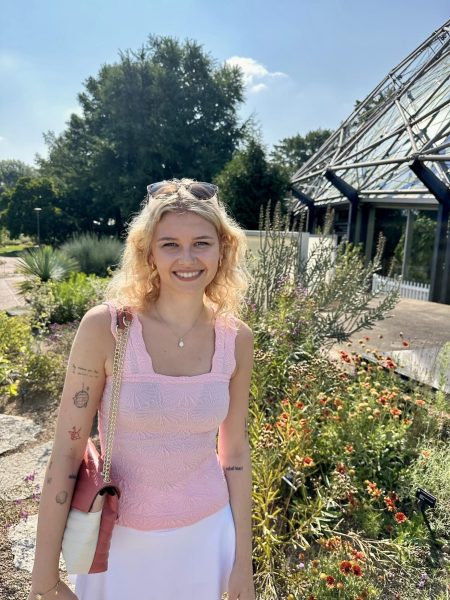A student-created satellite designed to advance spacecraft autonomy is set to launch in 2025. This is just the most recent satellite project that Saint Louis University’s Space Systems Research Laboratory (SSRL) has built.
The DARLA (Demonstration of Artificial Reasoning, Learning and Analysis) mission was originally set to launch in December 2024, a deadline that had the members of SSRL racing against the clock. With environmental testing scheduled for October, many of DARLA’s critical systems needed to be fully operational. Long nights and early mornings had become the norm for the SSRL team as they prepared for the final stages.
Just as the December deadline loomed, the mission’s launch date was pushed to May 2025. The news was both a relief and a shock for the research lab members. While it granted the team more time to refine their satellite, it also shifted the finish line after countless hours of work. Now, with a few extra months, the team, which is comprised almost entirely of undergraduate students, is determined to perfect DARLA and ensure the satellite is ready for orbit.
Nathan Brubaker, the chief engineer of DARLA, recalls the intensity of balancing lab work with classes, sharing how hard the team worked to keep the project on track before the launch date was pushed back.
“There was a period of several weeks where several of us on the DARLA team were working in the lab past midnight every day, often until two or three in the morning. Keeping up with classes during that time was incredibly difficult, not even considering also getting sleep,” Brubaker said.
DARLA represents the culmination of nearly a decade of iterative design. Dr. Michael Swartwout, the faculty advisor for the mission, explains that the project’s focus is on advancing spacecraft autonomy, which would allow the satellite to make decisions on its own, such as when to take images or send data back to Earth.
“Autonomy carries immense potential for efficiency, but it also brings significant risk. One wrong decision from the spacecraft, and you could jeopardize the whole mission,” Swartwout said.
DARLA, he added, is just one of many “baby steps” toward more autonomous space missions, developed with his long-time collaborator and the team’s software engineer, Keith Bennett.
This is not the first time Swartwout has overseen a student-run satellite mission at SLU; DARLA is one of five successful missions the university has built since 2013, each under NASA’s CubeSat Launch Initiative. Through this program, NASA provides free launches to university programs, although building the spacecraft itself requires external funding and grants.
“NASA doesn’t fund flight missions like ours,” Swartwout said. “We’ve had to piece together our budget from competitions and smaller grants.”
The DARLA mission is a learning experience, not just for the students, but for the future of space exploration. The satellite aims to demonstrate how autonomous technology can function in space, so the project represents a stepping stone in making space missions more efficient.
Junior Melanie Reym is the project manager of DARLA and structures lead. She oversees the project and manages other SSRL leads, along with Brubaker. For Reym, one of the hardest parts has been adjusting to setbacks without losing momentum.
“Accounting for slips in our timeline and mitigating them can be challenging at times. Especially during final integration, one error or delay on a part can set us back days which leads to some of us working very long hours and making abrupt schedule changes,” Reym said.

The success of the entire club relies on students showing up and putting in the work.
Owen Binkley, the mission operations manager of DARLA and ground subsection lead, spoke positively about the team’s efforts.
“We’ve been very lucky in that we have a lot of people who are actually dedicated and are showing up constantly and doing the work that needs to be done,” Binkley said.
Dedication is only part of the challenge. The steep learning curve in such a technical and competitive environment can be daunting for the students.
“It’s very easy to be discouraged when you’re around people who have so much knowledge in their specialized skill set. It took me a while to get over that hump,” sophomore lab manager Casey Roberts said.
Roberts is only in her second year with SSRL and is already in charge of managing the lab and its members and making sure everyone has what they need.
“I had to change my mindset from being discouraged to being inspired,” Roberts said.
The mission experience opens up a variety of opportunities for students’ futures.
“Mission design is something I really enjoy,” Brinkley said. “I don’t want to work on weapons, like a lot of people who do aerospace stuff. I want to work on missions to other planets, more exploration-type things, trying to advance the knowledge of the human race.”
Senior Shelby Slomski, the communications lead and ground co-lead of SSRL, echoes that sentiment, mentioning that space has been a goal for many years.
“I want to work on spacecraft and space systems. I’ve narrowed it down to wanting to work on satellites, doing all the work in this club, being involved and learning as much as I have has shown me that is really a possibility,” Slomski said.
However, managing a project of this scale is not easy. Between tight deadlines, limited resources and the inevitable technical challenges, the DARLA team is constantly navigating obstacles, according to their faculty advisor.
“It’s too easy for students to design something that turns out to be too difficult to build,” Swartwout said, reflecting on the challenges of space hardware. “The real world is messy, and space is even messier. Every component has to withstand the harsh conditions of space: extreme temperatures, radiation, vacuum, all of which are actively trying to break your spacecraft.”
The team has run into a variety of technical issues preparing DARLA for launch.
“The spacecraft radio is a finicky beast,” Slomski said. Slomski has focused largely on the spacecraft and ground radios.
There have been multiple issues with the radios’ communications throughout the last couple of months.
“It’s a very complicated process. It doesn’t seem that complicated until you’re the one staring at the coding files,” Slomski said.
These technical hurdles are not just obstacles but learning opportunities that push students to adapt and grow.
“We have had so many preventable and non-preventable setbacks,” Roberts said, shaking her head. “You know, it’s experimental learning, not every experiment can be successful.”
Despite these challenges, the DARLA mission is well on its way to success. The team is preparing for environmental testing in December, a crucial milestone before the May launch date.
“The real challenge isn’t just getting the design right,” Swartwout said. “It’s making sure the hardware works in the real world. Space doesn’t forgive mistakes.”
Overcoming these challenges is what positions DARLA as more than just a student project. DARLA is part of a broader effort by universities to contribute to the future of space exploration. By participating in NASA’s CubeSat Launch Initiative, SLU students are helping to push the boundaries of what is possible for space missions.










